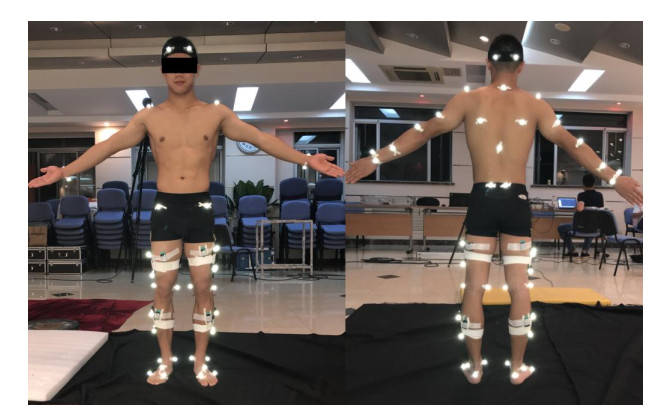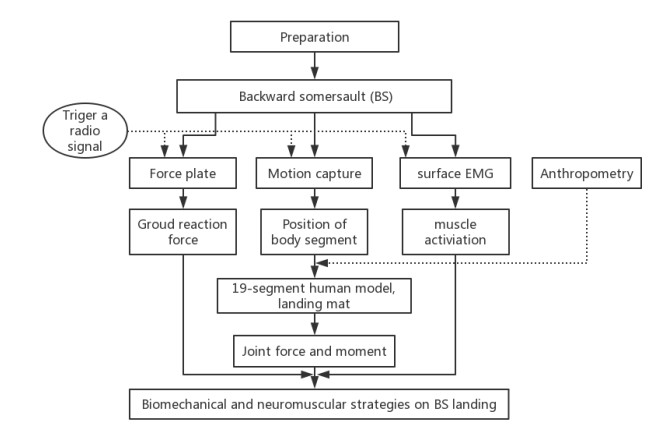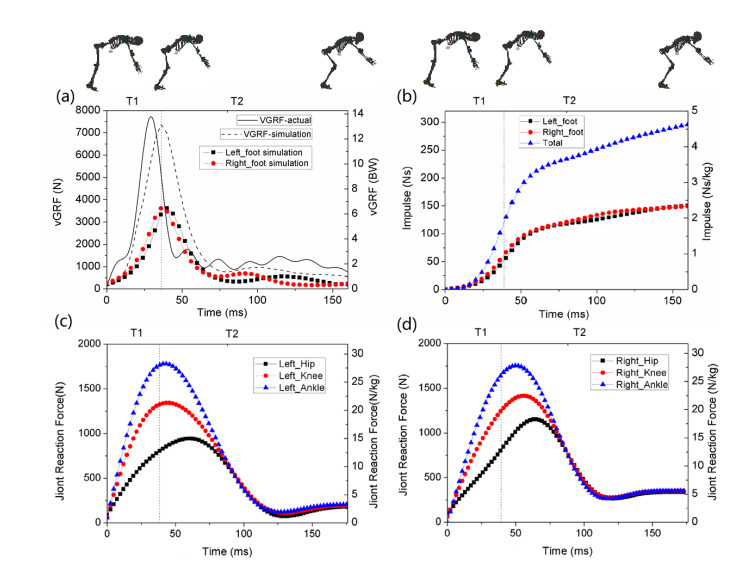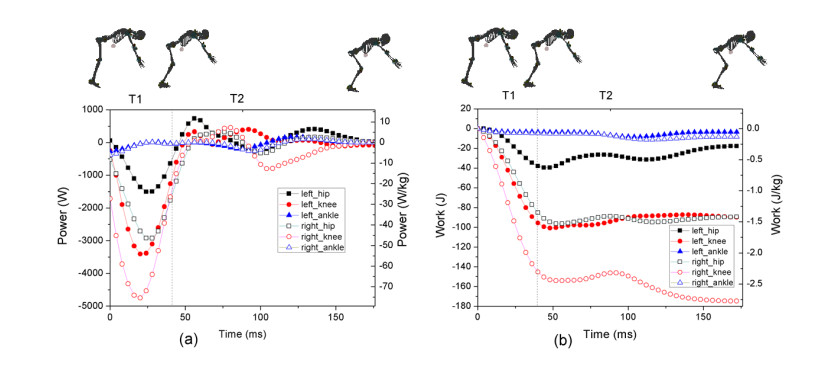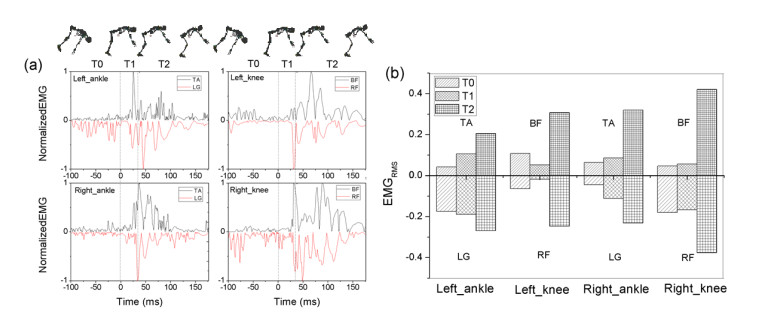|
[1]
|
Bürk K (2017) Friedreich Ataxia: current status and future prospects. Cerebellum Ataxias.
|
|
[2]
|
Leonard H, Cobb S, Downs J (2016) Clinical and biological progress over 50 years in Rett syndrome. Nat Rev Neurol 13: 37–51.
|
|
[3]
|
Auburger G, Klinkenberg M, Drost J, et al. (2012) Primary Skin Fibroblasts as a Model of Parkinson's Disease. Mol Neurobiol 46: 20–27. doi: 10.1007/s12035-012-8245-1

|
|
[4]
|
Petters RM, Sommer JR (2000) Transgenic animals as models for human disease. Transgenic Res 9: 347–351. doi: 10.1023/A:1008926303533

|
|
[5]
|
Hargus G, Ehrlich M, Hallmann AL, et al. (2014) Human stem cell models of neurodegeneration: A novel approach to study mechanisms of disease development. Acta Neuropathol 127: 151–173. doi: 10.1007/s00401-013-1222-6

|
|
[6]
|
Ilic D, Ogilvie C (2017) Concise Review: Human Embryonic Stem Cells-What Have We Done? What Are We Doing? Where Are We Going? Stem Cells 35: 17–25.
|
|
[7]
|
Randolph LN, Jiang Y, Lian X (2017) Stem Cell Engineering and Differentiation for Disease Modeling and Cell-based Therapies. AIMS Cell Tissue Eng 1: 140–157. doi: 10.3934/celltissue.2017.2.140

|
|
[8]
|
Takahashi K, Yamanaka S (2006) Induction of Pluripotent Stem Cells from Mouse Embryonic and Adult Fibroblast Cultures by Defined Factors. Cell 126: 663–676. doi: 10.1016/j.cell.2006.07.024

|
|
[9]
|
Takahashi K, Tanabe K, Ohnuki M, et al. (2007) Induction of Pluripotent Stem Cells from Adult Human Fibroblasts by Defined Factors. Cell 131: 861–872. doi: 10.1016/j.cell.2007.11.019

|
|
[10]
|
Poon A, Zhang Y, Chandrasekaran A, et al. (2017) Modeling neurodegenerative diseases with patient-derived induced pluripotent cells: Possibilities and challenges. N Biotechnol 39: 190–198. doi: 10.1016/j.nbt.2017.05.009

|
|
[11]
|
Tabar V, Studer L (2014) Pluripotent stem cells in regenerative medicine: Challenges and recent progress. Na Rev Genet 15: 82–92. doi: 10.1038/nrg3563

|
|
[12]
|
Mertens J, Marchetto MC, Bardy C, et al. (2016) Evaluating cell reprogramming, differentiation and conversion technologies in neuroscience. Nat Rev Neurosci 17: 424–437. doi: 10.1038/nrn.2016.46

|
|
[13]
|
Lancaster M, Renner M, Martin C, et al. (2013) Cerebral organoids model human brain development and microcephaly. Nature 501: 373–379. doi: 10.1038/nature12517

|
|
[14]
|
Pasca AM, Sloan SA, Clarke LE, et al. (2015) Functional cortical neurons and astrocytes from human pluripotent stem cells in 3D culture. Nat Methods 12: 671–678. doi: 10.1038/nmeth.3415

|
|
[15]
|
Soldner F, Laganière J, Cheng AW, et al. (2011) Generation of Isogenic Pluripotent Stem Cells Differing Exclusively at Two Early Onset Parkinson Point Mutations. Cell 146: 318–331. doi: 10.1016/j.cell.2011.06.019

|
|
[16]
|
Bassett AR (2017) Editing the genome of hiPSC with CRISPR/Cas9: disease models. Mamm Genome 28: 348–364. doi: 10.1007/s00335-017-9684-9

|
|
[17]
|
Thomson JA, Itskovitz-Eldor J, Shapiro SS, et al. (1998) Embryonic stem cell lines derived from human blastocysts. Science 282: 1145–1147.
|
|
[18]
|
Wilmut I, Schnieke AE, McWhir J, et al. (1997) Viable offspring derived from fetal and adult mammalian cells. Nature 385: 810–813. doi: 10.1038/385810a0

|
|
[19]
|
Cowan CA, Atienza J, Melton DA, et al. (2005) Nuclear reprogramming of somatic cells after fusion with human embryonic stem cells. Science 309: 1369–1373. doi: 10.1126/science.1116447

|
|
[20]
|
Yu J, Vodyanik MA, Smuga-Otto K, et al. (2007) Induced Pluripotent Stem Cell Lines Derived from Human Somatic Cells. Science 318: 1917–1920. doi: 10.1126/science.1151526

|
|
[21]
|
Okita K, Matsumura Y, Sato Y, et al. (2011) A more efficient method to generate integration-free human iPS cells. Nat Methods 8: 409. doi: 10.1038/nmeth.1591

|
|
[22]
|
Daley GQ (2014) Dissecting reprogramming, differentiation and conversion with network biology. Leuk Suppl 3: S3–S4. doi: 10.1038/leusup.2014.2

|
|
[23]
|
Zhou W, Freed CR (2009) Adenoviral Gene Delivery Can Reprogram Human Fibroblasts to Induced Pluripotent Stem Cells. Stem Cells 27: 2667–2674. doi: 10.1002/stem.201

|
|
[24]
|
Zhou Y, Zeng F (2013) Integration-free Methods for Generating Induced Pluripotent Stem Cells. Genom Proteom Bioinform 11: 284–287. doi: 10.1016/j.gpb.2013.09.008

|
|
[25]
|
Nakanishi M, Otsu M (2012) Development of Sendai Virus Vectors and their Potential Applications in Gene Therapy and Regenerative Medicine. Curr Gene Ther 12: 410–416. doi: 10.2174/156652312802762518

|
|
[26]
|
Kim D, Kim CH, Moon JI, et al. (2009) Generation of Human Induced Pluripotent Stem Cells by Direct Delivery of Reprogramming Proteins. Cell Stem Cell 4: 472–476. doi: 10.1016/j.stem.2009.05.005

|
|
[27]
|
Okita K, Yamanaka S (2011) Induced pluripotent stem cells: opportunities and challenges. Philos Trans R Soc B Biol Sci 366: 2198–2207. doi: 10.1098/rstb.2011.0016

|
|
[28]
|
Paridaen JT, Huttner WB (2014) Neurogenesis during development of the vertebrate central nervous system. EMBO Rep 15: 351–364. doi: 10.1002/embr.201438447

|
|
[29]
|
Chandrasekaran A, Avci HX, Ochalek A, et al. (2017) Comparison of 2D and 3D neural induction methods for the generation of neural progenitor cells from human induced pluripotent stem cells. Stem Cell Res 25: 139–151. doi: 10.1016/j.scr.2017.10.010

|
|
[30]
|
Chuang JH (2015) Neural differentiation from embryonic stem cells in vitro : An overview of the signaling pathways. World J Stem Cells 7: 437. doi: 10.4252/wjsc.v7.i2.437

|
|
[31]
|
Chambers SM, Fasano CA, Papapetrou EP, et al. (2009) Highly efficient neural conversion of human ES and iPS cells by dual inhibition of SMAD signaling. Nat Biotechnol 27: 275–280. doi: 10.1038/nbt.1529

|
|
[32]
|
Qi Y, Zhang XJ, Renier N, et al. (2017) Combined small-molecule inhibition accelerates the derivation of functional cortical neurons from human pluripotent stem cells. Nat Biotechnol 35: 154–163. doi: 10.1038/nbt.3777

|
|
[33]
|
Kim DS, Jung SJ, Lee JS, et al. (2017) Rapid generation of OPC-like cells from human pluripotent stem cells for treating spinal cord injury. Exp Mole Med 49: e361. doi: 10.1038/emm.2017.106

|
|
[34]
|
Wang S, Bates J, Li X, et al. (2013) Human iPSC-derived oligodendrocyte progenitor cells can myelinate and rescue a mouse model of congenital hypomyelination. Cell Stem Cell 12: 252–264. doi: 10.1016/j.stem.2012.12.002

|
|
[35]
|
Xu XH, Zhong Z (2013) Disease modeling and drug screening for neurological diseases using human induced pluripotent stem cells. Acta Pharmacol Sin 34: 755–764. doi: 10.1038/aps.2013.63

|
|
[36]
|
Lojewski X, Staropoli JF, Biswas-legrand S, et al. (2014) Human iPSC models of neuronal ceroid lipofuscinosis capture distinct effects of TPP1 and CLN3 mutations on the endocytic pathway. Hum Mol Genet 23: 2005–2022. doi: 10.1093/hmg/ddt596

|
|
[37]
|
Espuny-Camacho I, Michelsen KA, Linaro D, et al. (2018) Human Pluripotent Stem-Cell-Derived Cortical Neurons Integrate Functionally into the Lesioned Adult Murine Visual Cortex in an Area-Specific Way. Cell Rep 23: 2732–2743. doi: 10.1016/j.celrep.2018.04.094

|
|
[38]
|
Dwyer ND, Chen B, Chou SJ, et al. (2016) Neural Stem Cells to Cerebral Cortex: Emerging Mechanisms Regulating Progenitor Behavior and Productivity. J Neurosci 36: 11394–11401. doi: 10.1523/JNEUROSCI.2359-16.2016

|
|
[39]
|
Rigamonti A, Repetti GG, Sun C, et al. (2016) Large-Scale Production of Mature Neurons from Human Pluripotent Stem Cells in a Three-Dimensional Suspension Culture System. Stem cell Rep 6: 993–1008. doi: 10.1016/j.stemcr.2016.05.010

|
|
[40]
|
Gunhanlar N, Shpak G, van der Kroeg M, et al. (2018) A simplified protocol for differentiation of electrophysiologically mature neuronal networks from human induced pluripotent stem cells. Mol Psychiatry 23: 1336–1344. doi: 10.1038/mp.2017.56

|
|
[41]
|
Alcamo EA, Chirivella L, Dautzenberg M, et al. (2008) Satb2 regulates callosal projection neuron identity in the developing cerebral cortex. Neuron 57: 364–377. doi: 10.1016/j.neuron.2007.12.012

|
|
[42]
|
Britanova O, de Juan Romero C, Cheung A, et al. (2008) Satb2 is a postmitotic determinant for upper-layer neuron specification in the neocortex. Neuron 57: 378–392. doi: 10.1016/j.neuron.2007.12.028

|
|
[43]
|
Shi Y, Kirwan P, Livesey FJ (2012) Directed differentiation of human pluripotent stem cells to cerebral cortex neurons and neural networks. Nat Protoc 7: 1836–1846. doi: 10.1038/nprot.2012.116

|
|
[44]
|
Chen B, Wang SS, Hattox AM, et al. (2008) The Fezf2-Ctip2 genetic pathway regulates the fate choice of subcortical projection neurons in the developing cerebral cortex. Proc Nat Acad Sci 105: 11382–11387. doi: 10.1073/pnas.0804918105

|
|
[45]
|
Espuny-Camacho I, Michelsen KA, Gall D, et al. (2013) Pyramidal neurons derived from human pluripotent stem cells integrate efficiently into mouse brain circuits in vivo. Neuron 77: 440–456. doi: 10.1016/j.neuron.2012.12.011

|
|
[46]
|
Elkabetz Y, Panagiotakos G, Al Shamy G, et al. (2008) Human ES cell-derived neural rosettes reveal a functionally distinct early neural stem cell stage. Genes Dev 22: 152–165. doi: 10.1101/gad.1616208

|
|
[47]
|
Paşca SP, Portmann T, Voineagu I, et al. (2011) Using iPSC-derived neurons to uncover cellular phenotypes associated with Timothy syndrome. Nat Med 17: 1657–1662. doi: 10.1038/nm.2576

|
|
[48]
|
Davis-Dusenbery BN, Williams LA, Klim JR, et al. (2014) How to make spinal motor neurons. Development 141: 491–501. doi: 10.1242/dev.097410

|
|
[49]
|
Santiago C, Bashaw GJ (2014) Transcription factors and effectors that regulate neuronal morphology. Development 141: 4667–4680. doi: 10.1242/dev.110817

|
|
[50]
|
Stifani N (2014) Motor neurons and the generation of spinal motor neuron diversity. Front Cell Neurosci 8: 293.
|
|
[51]
|
Du ZW, Chen H, Liu H, et al. (2015) Generation and expansion of highly pure motor neuron progenitors from human pluripotent stem cells. Nat Commun 6: 6626. doi: 10.1038/ncomms7626

|
|
[52]
|
Hester ME, Murtha MJ, Song S, et al. (2011) Rapid and efficient generation of functional motor neurons from human pluripotent stem cells using gene delivered transcription factor codes. Mol Ther 19: 1905–1912. doi: 10.1038/mt.2011.135

|
|
[53]
|
Di Giorgio FP, Boulting GL, Bobrowicz S, et al. (2008) Human Embryonic Stem Cell-Derived Motor Neurons Are Sensitive to the Toxic Effect of Glial Cells Carrying an ALS-Causing Mutation. Cell Stem Cell 3: 637–648. doi: 10.1016/j.stem.2008.09.017

|
|
[54]
|
Amoroso MW, Croft GF, Williams DJ, et al. (2013) Accelerated high-yield generation of limb-innervating motor neurons from human stem cells. J Neurosci 33: 574–586. doi: 10.1523/JNEUROSCI.0906-12.2013

|
|
[55]
|
Karumbayaram S, Novitch BG, Patterson M, et al. (2009) Directed differentiation of human-induced pluripotent stem cells generates active motor neurons. Stem Cells 27: 806–811. doi: 10.1002/stem.31

|
|
[56]
|
Toma JS, Shettar BC, Chipman PH, et al. (2015) Motoneurons derived from induced pluripotent stem cells develop mature phenotypes typical of endogenous spinal motoneurons. J Neurosci 35: 1291–1306. doi: 10.1523/JNEUROSCI.2126-14.2015

|
|
[57]
|
Pepper JP, Wang TV, Hennes V, et al. (2017) Human induced pluripotent stem cell–derived motor neuron transplant for neuromuscular atrophy in a mouse model of sciatic nerve injury. JAMA Facial Plast Surg 19: 197. doi: 10.1001/jamafacial.2016.1544

|
|
[58]
|
Chandrasekaran A, Avci HX, Leist M, et al. (2016) Astrocyte differentiation of human pluripotent stem cells: New tools for neurological disorder research. Front Cell Neurosci 10: 215.
|
|
[59]
|
Santos R, Vadodaria KC, Jaeger BN, et al. (2017) Differentiation of inflammation-responsive astrocytes from glial progenitors generated from human induced pluripotent stem cells. Stem Cell Rep 8: 1757–1769. doi: 10.1016/j.stemcr.2017.05.011

|
|
[60]
|
TCW J, Wang M, Pimenova AA, et al. (2017) An Efficient Platform for Astrocyte Differentiation from Human Induced Pluripotent Stem Cells. Stem Cell Rep 9: 600–614. doi: 10.1016/j.stemcr.2017.06.018

|
|
[61]
|
Liu H, Zhang SC (2011) Specification of neuronal and glial subtypes from human pluripotent stem cells. Cell Mol Life Sci 68: 3995–4008. doi: 10.1007/s00018-011-0770-y

|
|
[62]
|
Krencik R, Weick JP, Liu Y, et al. (2011) Specification of transplantable astroglial subtypes from human pluripotent stem cells. Nat Biotechnol 29: 528–534. doi: 10.1038/nbt.1877

|
|
[63]
|
Jiang P, Chen C, Liu XB, et al. (2016) Human iPSC-Derived Immature Astroglia Promote Oligodendrogenesis by Increasing TIMP-1 Secretion. Cell Rep 15: 1303–1315. doi: 10.1016/j.celrep.2016.04.011

|
|
[64]
|
Nistor GI, Totoiu MO, Haque N, et al. (2005) Human embryonic stem cells differentiate into oligodendrocytes in high purity and myelinate after spinal cord transplantation. Glia 49: 385–396. doi: 10.1002/glia.20127

|
|
[65]
|
Hu BY, Du ZW, Zhang SC (2009) Differentiation of human oligodendrocytes from pluripotent stem cells. Nat Protoc 4: 1614–1622. doi: 10.1038/nprot.2009.186

|
|
[66]
|
Goldman SA, Kuypers NJ (2015) How to make an oligodendrocyte. Development 142: 3983–3995. doi: 10.1242/dev.126409

|
|
[67]
|
Doerr J, Böckenhoff A, Ewald B, et al. (2015) Arylsulfatase A Overexpressing Human iPSC-derived Neural Cells Reduce CNS Sulfatide Storage in a Mouse Model of Metachromatic Leukodystrophy. Mol Ther 23: 1519–1531. doi: 10.1038/mt.2015.106

|
|
[68]
|
Pouya A, Satarian L, Kiani S, et al. (2011) Human induced pluripotent stem cells differentiation into oligodendrocyte progenitors and transplantation in a rat model of optic chiasm demyelination. PLoS One 6: e27925. doi: 10.1371/journal.pone.0027925

|
|
[69]
|
Lippmann ES, Azarin SM, Kay JE, et al. (2012) Derivation of blood-brain barrier endothelial cells from human pluripotent stem cells. Na Biotechnol 30: 783–791. doi: 10.1038/nbt.2247

|
|
[70]
|
Appelt-Menzel A, Cubukova A, Günther K, et al. (2017) Establishment of a human blood-brain barrier co-culture model mimicking the neurovascular unit using induced pluri- and multipotent stem cells. Stem Cell Rep 8: 894–906. doi: 10.1016/j.stemcr.2017.02.021

|
|
[71]
|
Busskamp V, Lewis NE, Guye P, et al. (2014) Rapid neurogenesis through transcriptional activation in human stem cells. Mol Syst Biol 10: 760–760. doi: 10.15252/msb.20145508

|
|
[72]
|
Zhang Y, Pak CH, Han Y, et al. (2013) Rapid single-step induction of functional neurons from human pluripotent stem cells. Neuron 78: 785–798. doi: 10.1016/j.neuron.2013.05.029

|
|
[73]
|
Wang C, Ward ME, Chen R, et al. (2017) Scalable Production of iPSC-Derived Human Neurons to Identify Tau-Lowering Compounds by High-Content Screening. Stem Cell Rep 9: 1221–1233. doi: 10.1016/j.stemcr.2017.08.019

|
|
[74]
|
Fernandopulle MS, Prestil R, Grunseich C, et al. (2018) Transcription Factor–Mediated Differentiation of Human iPSCs into Neurons. Curr Protoc Cell Biol 79: e51. doi: 10.1002/cpcb.51

|
|
[75]
|
Li X, Tao Y, Bradley R, et al. (2018) Fast Generation of Functional Subtype Astrocytes from Human Pluripotent Stem Cells. Stem Cell Rep 11: 998–1008. doi: 10.1016/j.stemcr.2018.08.019

|
|
[76]
|
Ehrlich M, Mozafari S, Glatza M, et al. (2017) Rapid and efficient generation of oligodendrocytes from human induced pluripotent stem cells using transcription factors. Proc Natl Acade Sci U S A 114: E2243–E2252. doi: 10.1073/pnas.1614412114

|
|
[77]
|
García-León JA, Kumar M, Boon R, et al. (2018) SOX10 Single Transcription Factor-Based Fast and Efficient Generation of Oligodendrocytes from Human Pluripotent Stem Cells. Stem Cell Rep 10: 655–672. doi: 10.1016/j.stemcr.2017.12.014

|
|
[78]
|
Ardhanareeswaran K, Mariani J, Coppola G, et al. (2017) Human induced pluripotent stem cells for modelling neurodevelopmental disorders. Nat Rev Neurol 13: 265–278. doi: 10.1038/nrneurol.2017.45

|
|
[79]
|
Shovlin S, Tropea D (2018) Transcriptome level analysis in Rett syndrome using human samples from different tissues. Orphanet J Rare Dis 13: 113. doi: 10.1186/s13023-018-0857-8

|
|
[80]
|
Chahrour M, Zoghbi HY (2007) The Story of Rett Syndrome: From Clinic to Neurobiology. Neuron 56: 422–437. doi: 10.1016/j.neuron.2007.10.001

|
|
[81]
|
Huidobro C, Fernandez AF, Fraga MF (2013) The role of genetics in the establishment and maintenance of the epigenome. Cell Mol Life Sci 70: 1543–1573. doi: 10.1007/s00018-013-1296-2

|
|
[82]
|
Kishi N, Macklis JD (2004) MECP2 is progressively expressed in post-migratory neurons and is involved in neuronal maturation rather than cell fate decisions. Mol Cell Neurosci 27: 306–321. doi: 10.1016/j.mcn.2004.07.006

|
|
[83]
|
Damen D, Heumann R (2013) MeCP2 phosphorylation in the brain: From transcription to behavior. Biol Chem 394: 1595–1605.
|
|
[84]
|
Hendrich B, Bird A (1998) Identification and Characterization of a Family of Mammalian Methyl-CpG Binding Proteins. Mol Cell Biol 18: 6538–6547. doi: 10.1128/MCB.18.11.6538

|
|
[85]
|
Gold WA, Krishnarajy R, Ellaway C, et al. (2018) Rett Syndrome: A Genetic Update and Clinical Review Focusing on Comorbidities. ACS Chem Neurosci 9: 167–176. doi: 10.1021/acschemneuro.7b00346

|
|
[86]
|
Ausió J (2018) Role of MeCP2 in neurological disorders: current status and future perspectives. Epigenomics 10: 5–8. doi: 10.2217/epi-2017-0128

|
|
[87]
|
Linda K, Fiuza C, Nadif Kasri N (2018) The promise of induced pluripotent stem cells for neurodevelopmental disorders. Prog Neuropsychopharmacol Biol Psychiatry 84: 382–391. doi: 10.1016/j.pnpbp.2017.11.009

|
|
[88]
|
Marchetto MC, Carromeu C, Acab A, et al. (2010) A model for neural development and treatment of Rett syndrome using human induced pluripotent stem cells. Cell 143: 527–539. doi: 10.1016/j.cell.2010.10.016

|
|
[89]
|
Kim KY, Hysolli E, Park IH (2011) Neuronal maturation defect in induced pluripotent stem cells from patients with Rett syndrome. Proc Natl Acad Sci U S A 108: 14169–14174. doi: 10.1073/pnas.1018979108

|
|
[90]
|
Farra N, Zhang WB, Pasceri P, et al. (2012) Rett syndrome induced pluripotent stem cell-derived neurons reveal novel neurophysiological alterations. Mol Psychiatry 17: 1261–1271. doi: 10.1038/mp.2011.180

|
|
[91]
|
Cheung AY, Horvath LM, Grafodatskaya D, et al. (2011) Isolation of MECP2-null Rett Syndrome patient hiPS cells and isogenic controls through X-chromosome inactivation. Hum Mol Genet 20: 2103–2115. doi: 10.1093/hmg/ddr093

|
|
[92]
|
Djuric U, Cheung AYL, Zhang W, et al. (2015) MECP2e1 isoform mutation affects the form and function of neurons derived from Rett syndrome patient iPS cells. Neurobiol Dis 76: 37–45. doi: 10.1016/j.nbd.2015.01.001

|
|
[93]
|
Lioy DT, Garg SK, Monaghan CE, et al. (2011) A role for glia in the progression of Rett's syndrome. Nature 475: 497–500. doi: 10.1038/nature10214

|
|
[94]
|
Williams EC, Zhong X, Mohamed A, et al. (2014) Mutant astrocytes differentiated from Rett syndrome patients-specific iPSCs have adverse effects on wildtype neurons. Hum Mol Genet 23: 2968–2980. doi: 10.1093/hmg/ddu008

|
|
[95]
|
Pearn JH (1978) Incidence, prevalence, and gene frequency studies of chronic childhood spinal muscular atrophy. J Med Genet 15: 409–413. doi: 10.1136/jmg.15.6.409

|
|
[96]
|
Ebert AD, Svendsen CN (2010) Stem cell model of spinal muscular atrophy. Arch Neurol 67: 665–669.
|
|
[97]
|
Sareen D, Ebert AD, Heins BM, et al. (2012) Inhibition of apoptosis blocks human motor neuron cell death in a stem cell model of spinal muscular atrophy. PLoS One 7: e39113. doi: 10.1371/journal.pone.0039113

|
|
[98]
|
Liu Q, Fischer U, Wang F, et al. (1997) The spinal muscular atrophy disease gene product, SMN, and its associated protein SIP1 are in a complex with spliceosomal snRNP proteins. Cell 90: 1013–1021. doi: 10.1016/S0092-8674(00)80367-0

|
|
[99]
|
Fischer U, Liu Q, Dreyfuss G (1997) The SMN-SIP1 complex has an essential role in spliceosomal snRNP biogenesis. Cell 90: 1023–1029. doi: 10.1016/S0092-8674(00)80368-2

|
|
[100]
|
Rossoll W, Jablonka S, Andreassi C, et al. (2003) Smn, the spinal muscular atrophy-determining gene product, modulates axon growth and localization of β-actin mRNA in growth cones of motoneurons. J Cell Biol 163: 801–812. doi: 10.1083/jcb.200304128

|
|
[101]
|
Farrar MA, Kiernan MC (2015) The Genetics of Spinal Muscular Atrophy: Progress and Challenges. Neurotherapeutics 12: 290–302. doi: 10.1007/s13311-014-0314-x

|
|
[102]
|
Corti S, Nizzardo M, Simone C, et al. (2012) Genetic correction of human induced pluripotent stem cells from patients with spinal muscular atrophy. Sci Transl Med 4: 165ra162.
|
|
[103]
|
Yoshida M, Kitaoka S, Egawa N, et al. (2015) Modeling the early phenotype at the neuromuscular junction of spinal muscular atrophy using patient-derived iPSCs. Stem Cell Rep 4: 561–568. doi: 10.1016/j.stemcr.2015.02.010

|
|
[104]
|
Mcgivern JV, Patitucci TN, Nord JA, et al. (2013) Spinal muscular atrophy astrocytes exhibit abnormal calcium regulation and reduced growth factor production. Glia 61: 1418–1428. doi: 10.1002/glia.22522

|
|
[105]
|
Zhou C, Feng Z, Ko CP (2016) Defects in Motoneuron-Astrocyte Interactions in Spinal Muscular Atrophy. J Neurosci 36: 2543–2553. doi: 10.1523/JNEUROSCI.3534-15.2016

|
|
[106]
|
Almad AA, Maragakis NJ (2012) Glia: An emerging target for neurological disease therapy. Stem Cell Res Ther 3: 37. doi: 10.1186/scrt128

|
|
[107]
|
Cloake NC, Yan J, Aminian A, et al. (2018) PLP1 mutations in patients with multiple sclerosis: Identification of a new mutation and potential pathogenicity of the mutations. J Clin Med 7: 100. doi: 10.3390/jcm7050100

|
|
[108]
|
Hobson GM, Kamholz J (1993) PLP1-Related Disorders. GeneReviews®.
|
|
[109]
|
Garbern JY (2007) Pelizaeus-Merzbacher disease: Genetic and cellular pathogenesis. Cell Mol Life Sci 64: 50–65. doi: 10.1007/s00018-006-6182-8

|
|
[110]
|
Numasawa-Kuroiwa Y, Okada Y, Shibata S, et al. (2014) Involvement of ER stress in dysmyelination of pelizaeus-merzbacher disease with PLP1 missense mutations shown by iPSC-derived oligodendrocytes. Stem Cell Rep 2: 648–661. doi: 10.1016/j.stemcr.2014.03.007

|
|
[111]
|
Takahashi T, Suzuki T (2012) Role of sulfatide in normal and pathological cells and tissues. J Lipid Res 53: 1437–1450. doi: 10.1194/jlr.R026682

|
|
[112]
|
Patil SA, Maegawa GHB (2013) Developing therapeutic approaches for metachromatic leukodystrophy. Drug Des Devel Ther 7: 729–745.
|
|
[113]
|
Ramakrishnan H, Hedayati KK, Lüllmann-Rauch R, et al. (2007) Increasing sulfatide synthesis in myelin-forming cells of arylsulfatase A-deficient mice causes demyelination and neurological symptoms reminiscent of human metachromatic leukodystrophy. J Neurosci 27: 9482–9490. doi: 10.1523/JNEUROSCI.2287-07.2007

|
|
[114]
|
Deconinck N, Messaaoui A, Ziereisen F, et al. (2008) Metachromatic leukodystrophy without arylsulfatase A deficiency: A new case of saposin-B deficiency. Eur J Paediatr Neurol 12: 46–50. doi: 10.1016/j.ejpn.2007.05.004

|
|
[115]
|
Frati G, Luciani M, Meneghini V, et al. (2018) Human iPSC-based models highlight defective glial and neuronal differentiation from neural progenitor cells in metachromatic leukodystrophy. Cell Death Dis 9: 698. doi: 10.1038/s41419-018-0737-0

|
|
[116]
|
Meneghini V, Frati G, Sala D, et al. (2017) Generation of human induced pluripotent stem cell-derived bona fide neural stem cells for ex vivo gene therapy of metachromatic leukodystrophy. Stem Cells Transl Med 6: 352–368. doi: 10.5966/sctm.2015-0414

|
|
[117]
|
Messing A, LaPash Daniels CM, Hagemann TL (2010) Strategies for Treatment in Alexander Disease. Neurotherapeutics 7: 507–515. doi: 10.1016/j.nurt.2010.05.013

|
|
[118]
|
Prust M, Wang J, Morizono H, et al. (2011) GFAP mutations, age at onset, and clinical subtypes in Alexander disease. Neurology 77: 1287–1294. doi: 10.1212/WNL.0b013e3182309f72

|
|
[119]
|
Jones JR, Kong L, Hanna MG, et al. (2018) Mutations in GFAP Disrupt the Distribution and Function of Organelles in Human Astrocytes. Cell Rep 25: 947–958.e4. doi: 10.1016/j.celrep.2018.09.083

|
|
[120]
|
Kondo T, Funayama M, Miyake M, et al. (2016) Modeling Alexander disease with patient iPSCs reveals cellular and molecular pathology of astrocytes. Acta Neuropathol Commun 4: 69. doi: 10.1186/s40478-016-0337-0

|
|
[121]
|
Li L, Tian E, Chen X, et al. (2018) GFAP Mutations in Astrocytes Impair Oligodendrocyte Progenitor Proliferation and Myelination in an hiPSC Model of Alexander Disease. Cell Stem Cell 23: 239–251.e6. doi: 10.1016/j.stem.2018.07.009

|
|
[122]
|
Anheim M, Lagier-Tourenne C, Stevanin G, et al. (2009) SPG11 spastic paraplegia: A new cause of juvenile parkinsonism. J Neurol 256: 104–108. doi: 10.1007/s00415-009-0083-3

|
|
[123]
|
Örlén H, Melberg A, Raininko R, et al. (2009) SPG11 mutations cause Kjellin syndrome, a hereditary spastic paraplegia with thin corpus callosum and central retinal degeneration. Am J Med Genet B Neuropsychiatric Genet 150: 984–992.
|
|
[124]
|
Renvoisé B, Chang J, Singh R, et al. (2014) Lysosomal abnormalities in hereditary spastic paraplegia types SPG15 and SPG11. Ann Clin Trans Neurol 1: 379–389. doi: 10.1002/acn3.64

|
|
[125]
|
Murmu RP, Martin E, Rastetter A, et al. (2011) Cellular distribution and subcellular localization of spatacsin and spastizin, two proteins involved in hereditary spastic paraplegia. Mol Cell Neurosci 47: 191–202. doi: 10.1016/j.mcn.2011.04.004

|
|
[126]
|
Hirst J, Borner GH, Edgar J, et al. (2013) Interaction between AP-5 and the hereditary spastic paraplegia proteins SPG11 and SPG15. Mole Biol Cell 24: 2558–2569. doi: 10.1091/mbc.e13-03-0170

|
|
[127]
|
Pérez-Brangulí F, Mishra HK, Prots I, et al. (2014) Dysfunction of spatacsin leads to axonal pathology in SPG11-linked hereditary spastic paraplegia. Hum Mol Genet 23: 4859–4874. doi: 10.1093/hmg/ddu200

|
|
[128]
|
Mishra HK, Prots I, Havlicek S, et al. (2016) GSK3ß-dependent dysregulation of neurodevelopment in SPG11-patient induced pluripotent stem cell model. Ann Neurol 79: 826–840. doi: 10.1002/ana.24633

|
|
[129]
|
Varga RE, Khundadze M, Damme M, et al. (2015) In vivo evidence for lysosome depletion and impaired autophagic clearance in hereditary spastic paraplegia type SPG11. PLoS Genet 11: e1005454. doi: 10.1371/journal.pgen.1005454

|
|
[130]
|
LaMarca EA, Powell SK, Akbarian S, et al. (2018) Modeling neuropsychiatric and neurodegenerative diseases with induced pluripotent stem cells. Front Pediatr 6: 82. doi: 10.3389/fped.2018.00082

|
|
[131]
|
Tian F, Hao J, Hu L, et al. (2018) Modeling neurodegenerative diseases by human pluripotent stem cell-induced brain organoid. Transl Surg 3: 42. doi: 10.4103/ts.ts_4_18

|
|
[132]
|
Wang H (2018) Modeling neurological diseases with human brain organoids. Front Synaptic Neurosci 10: 15. doi: 10.3389/fnsyn.2018.00015

|
|
[133]
|
Gabriel E, Wason A, Ramani A, et al. (2016) CPAP promotes timely cilium disassembly to maintain neural progenitor pool. EMBO J 35: 803–819. doi: 10.15252/embj.201593679

|
|
[134]
|
Li Y, Muffat J, Omer A, et al. (2016) Induction of expansion and folding in human cerebral organoids. Cell Stem Cell 20: 385–396.e3.
|
|
[135]
|
Mariani J, Coppola G, Zhang P, et al. (2015) FOXG1-Dependent Dysregulation of GABA/Glutamate Neuron Differentiation in Autism Spectrum Disorders. Cell 162: 375–390. doi: 10.1016/j.cell.2015.06.034

|
|
[136]
|
Kim YG, Cha J, Chandrasegaran S (1996) Hybrid restriction enzymes: zinc finger fusions to Fok I cleavage domain. Proc Natl Acad Sci U S A 93: 1156–1160. doi: 10.1073/pnas.93.3.1156

|
|
[137]
|
Porteus MH, Baltimore D (2003) Chimeric nucleases stimulate gene targeting in human cells. Science 300: 763. doi: 10.1126/science.1078395

|
|
[138]
|
Wang Y, Zhang WY, Hu S, et al. (2012) Genome Editing of Human Embryonic Stem Cells and Induced Pluripotent Stem Cells With Zinc Finger Nucleases for Cellular Imaging. Circ Res 111: 1494–1503. doi: 10.1161/CIRCRESAHA.112.274969

|
|
[139]
|
Ramalingam S, London V, Kandavelou K, et al. (2013) Generation and genetic engineering of human induced pluripotent stem cells using designed zinc finger nucleases. Stem Cells Dev 22: 595–610. doi: 10.1089/scd.2012.0245

|
|
[140]
|
Wood AJ, Lo TW, Zeitler B, et al. (2011) Targeted Genome Editing Across Species Using ZFNs and TALENs. Science 333: 307–307. doi: 10.1126/science.1207773

|
|
[141]
|
Sanjana NE, Cong L, Zhou Y, et al. (2012) A transcription activator-like effector toolbox for genome engineering. Nat Protoc 7: 171–192. doi: 10.1038/nprot.2011.431

|
|
[142]
|
Cong L, Ran FA, Cox D, et al. (2013) Multiplex genome engineering using CRISPR/Cas systems. Science 339: 819–823. doi: 10.1126/science.1231143

|
|
[143]
|
Mali P, Yang L, Esvelt KM, et al. (2013) RNA-guided human genome engineering via Cas9. Science 339: 823–826. doi: 10.1126/science.1232033

|
|
[144]
|
Suzuki T, Asami M, Perry ACF (2015) Asymmetric parental genome engineering by Cas9 during mouse meiotic exit. Sci Rep 4: 7621. doi: 10.1038/srep07621

|
|
[145]
|
Smith C, Gore A, Yan W, et al. (2014) Whole-genome sequencing analysis reveals high specificity of CRISPR/Cas9 and TALEN-based genome editing in human iPSCs. Cell Stem Cell 15: 12–13. doi: 10.1016/j.stem.2014.06.011

|
|
[146]
|
Smith C, Abalde-Atristain L, He C, et al. (2015) Efficient and allele-specific genome editing of disease loci in human iPSCs. Mol Ther 23: 570–577. doi: 10.1038/mt.2014.226

|
|
[147]
|
He X, Li YX, Feng B (2018) New Turns for High Efficiency Knock-In of Large DNA in Human Pluripotent Stem Cells. Stem Cells Int 2018: 1–7.
|
|
[148]
|
Fu Y, Reyon D, Keith Joung J (2014) Targeted genome editing in human cells using CRISPR/Cas nucleases and truncated guide RNAs. Methods Enzymol 546: 21–45.
|
|
[149]
|
Tsai SQ, Wyvekens N, Khayter C, et al. (2014) Dimeric CRISPR RNA-guided FokI nucleases for highly specific genome editing. Nat Biotechnol 32: 569–576. doi: 10.1038/nbt.2908

|
|
[150]
|
Raitano S, Ordovàs L, De Muynck L, et al. (2015) Restoration of progranulin expression rescues cortical neuron generation in an induced pluripotent stem cell model of frontotemporal dementia. Stem Cell Rep 4: 16–24. doi: 10.1016/j.stemcr.2014.12.001

|
|
[151]
|
Ebert AD, Yu J, Rose FF, et al. (2009) Induced pluripotent stem cells from a spinal muscular atrophy patient. Nature 457: 277–280. doi: 10.1038/nature07677

|
|
[152]
|
Simone C, Ramirez A, Bucchia M, et al. (2016) Is spinal muscular atrophy a disease of the motor neurons only: Pathogenesis and therapeutic implications? Cell Mol Life Sci 73: 1003–1020. doi: 10.1007/s00018-015-2106-9

|
|
[153]
|
Ramirez A, Crisafulli SG, Rizzuti M, et al. (2018) Investigation of New Morpholino Oligomers to Increase Survival Motor Neuron Protein Levels in Spinal Muscular Atrophy. Int J Mol Sci 19: E167. doi: 10.3390/ijms19010167

|
|
[154]
|
Klose RJ, Sarraf SA, Schmiedeberg L, et al. (2005) DNA Binding Selectivity of MeCP2 Due to a Requirement for A/T Sequences Adjacent to Methyl-CpG. Mol Cell 19: 667–678. doi: 10.1016/j.molcel.2005.07.021

|
|
[155]
|
Mellios N, Woodson J, Garcia RI, et al. (2014) β2-Adrenergic receptor agonist ameliorates phenotypes and corrects microRNA-mediated IGF1 deficits in a mouse model of Rett syndrome. Proc Natl Acad Sci U S A 111: 9947–9952. doi: 10.1073/pnas.1309426111

|
|
[156]
|
Chang Q, Khare G, Dani V, et al. (2006) The disease progression of Mecp2 mutant mice is affected by the level of BDNF expression. Neuron 49: 341–348. doi: 10.1016/j.neuron.2005.12.027

|
|
[157]
|
Wang H, Chan SA, Ogier M, et al. (2006) Dysregulation of brain-derived neurotrophic factor expression and neurosecretory function in Mecp2 null mice. J Neurosci 26: 10911–10915. doi: 10.1523/JNEUROSCI.1810-06.2006

|
|
[158]
|
Li W, Pozzo-Miller L (2014) BDNF deregulation in Rett syndrome. Neuropharmacology 76: 737–746. doi: 10.1016/j.neuropharm.2013.03.024

|
|
[159]
|
Williams EC, Zhong X, Mohamed A, et al. (2014) Mutant astrocytes differentiated from Rett syndrome patients-specific iPSCs have adverse effects on wild-type neurons. Hum Mol Genet 23: 2968–2980. doi: 10.1093/hmg/ddu008

|
|
[160]
|
Zhu JM, Zhao YY, Chen SD, et al. (2011) Functional recovery after transplantation of neural stem cells modified by brain-derived neurotrophic factor in rats with cerebral ischaemia. J Int Med Res 39: 488–498. doi: 10.1177/147323001103900216

|
|
[161]
|
Behrstock S, Ebert AD, Klein S, et al. (2008) Lesion-induced increase in survival and migration of human neural progenitor cells releasing GDNF. Cell Transplant 17: 753–762. doi: 10.3727/096368908786516819

|
|
[162]
|
Hjelm BE, Grunseich C, Gowing G, et al. (2016) Mifepristone-inducible transgene expression in neural progenitor cells in vitro and in vivo. Gene Ther 23: 424–437. doi: 10.1038/gt.2016.13

|









 DownLoad:
DownLoad:
